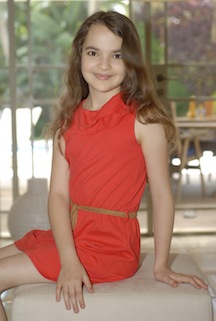Amongst the Jewish prisoners in the Theresienstadt concentration camp during the Second World War were distinguished scholars, scientists and artists. Despite adversity, dire inhumane circumstances and deportations to the death camp of Auschwitz, these prisoners organized many notable cultural events. Amongst the most memorable were performances of Verdi's Requiem under the direction of the Romanian conductor Rafael Schächter. This remarkable individual had at his disposal only a single printed copy of Verdi's composition. Thus every one of his 150-member chorus had to memorize the complex score by heart. Since there was no orchestra, accompaniment was provided by a legless upright piano propped up on boxes.
Rehearsals were held after the day's work. Choir members were exhausted and hungry but under Schächter's inspiration and charisma, these Jewish prisoners rose magnificently to the occasion. There were a total of 16 performances of the Requiem including one before Adolph Eichmann and a Red Cross delegation. The choir was decimated twice by deportations and the indefatigable Schächter had to recruit new volunteers and begin once again the process of teaching them their parts. Eventually Rafael Schächter himself was deported to Auschwitz where he was murdered. The Verdi Requiem was the prisoners' way of "singing to the Nazis what we cannot say to them," and represents a sterling and unique example of the answer to man's inhumanity to man.
Some years ago, the conductor Murry Sidlin, a former Dean of the Benjamin T. Rome School of Music at Catholic University of America in Washington DC, decided to commemorate these performances and to this end he conceived, directed and made commentaries in what is now known as The Defiant Requiem. This received a performance at the recent Israel Festival.
Sidlin has conducted The Defiant Requiem in several locations, most notably at Theresienstadt itself. His production takes the form of a multimedia drama combining Verdi's Requiem with video footage projected onto two large screens featuring spoken dialog from survivors of Schächter's original chorus as well as videos of the deportation and other unspeakable horrors of the Holocaust. Besides the video clips, there were also spoken commentaries by Murry Sidlin as well as from Israeli actors Sasson Gabai and Yona Elian. Dialog and videos were introduced between the movements of the Requiem. Only during the Agnes Dei (Lamb of God) was the music accompanied by Nazi propaganda clips about the camp.
An air of solemnity and dignity pervaded the whole experience. No applause greeted choir, orchestra, soloists and conductor on their entrance. Instead the audience were treated with a section of Bach's Chaconne, the concluding section of his second Partita for Violin played by the solitary first violinist of the Jerusalem Symphony Orchestra. This was perhaps a reminder to the audience of the rich and varied cultural environment in Theresienstadt despite the inhuman and barbaric conditions. Most of the sections of the Requiem were introduced on the piano, reminiscent of the Schächter performances when this represented the only musical accompaniment.
The most accomplished soloists were soprano Ira Bertman and tenor Yotam Cohen. Particularly noteworthy was Bertman's contribution to the concluding Libera Me (Deliver Me) section which she sang with passion and much conviction. The Kuhn Choir (Czech Republic) also acquitted themselves well. On occasion, the Jerusalem Symphony Orchestra sounded somewhat ponderous and laboured. However these minor deficiencies paled into insignificance when one considered the overall impression of this unforgettable emotional and musical experience.
At the end of the performance, darkness descended and there was a piecing whistle-like sound, implying the departure of the trains with their hapless Jewish inmates on the way to their death at Auschwitz. Slowly and silently, choir, orchestra, soloists and conductor exited leaving the lone violinist playing Oseh Shalom part of the traditional Jewish Kaddish (Mourner's Prayer) for the dead: "He who makes peace in his high holy places may he bring peace upon us, and upon all Israel." There was no applause. The audience stood for a moment in total silence and then slowly exited the auditorium.
The performance was shattering and without question, one of the highlights of the recent Israel Festival. This was a most unforgettable experience, which will forever be indelibly ingrained in my psyche. This is especially relevant today with the spectre of an imminent nuclear-armed Iran, a state that officially denies the Holocaust and has repeatedly called for Israel's annihilation.
Image: Murry Sidlin conducting the Defiant Requiem. Photo courtesy of Alex Irvine.


